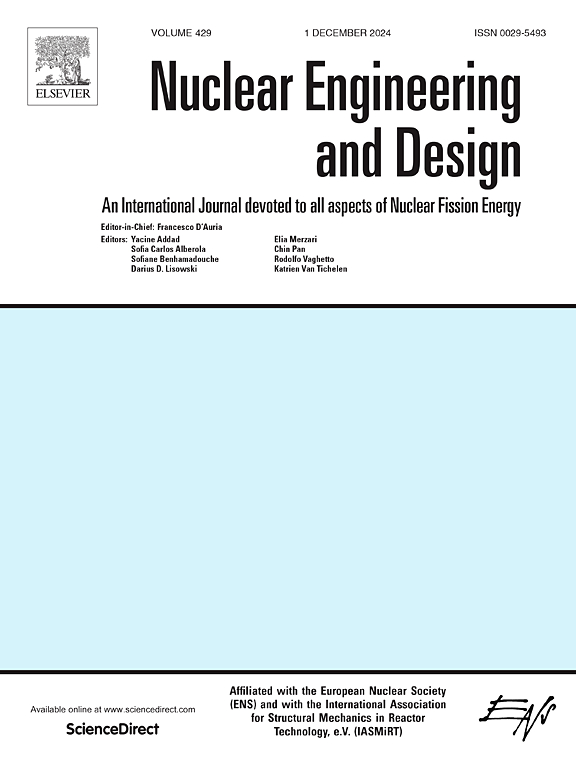Analysis of separation characteristics of variable plate-hook spacing corrugated plate separator
IF 1.9
3区 工程技术
Q1 NUCLEAR SCIENCE & TECHNOLOGY
引用次数: 0
Abstract
As an important steam-water separation device in nuclear power steam generators, the corrugated plate separator can separate water from steam, improve the dryness of the steam delivered, and ensure the safe operation of steam turbines and other equipment. This paper designs a corrugated plate structure with variable plate-hook spacing, and based on this structure, designs single-hook and double-hook corrugated plates with variable plate-hook spacing. At the same time, using numerical calculation methods, the performance of the corrugated plates with variable plate-hook spacing is compared with that of single-hook and double-hook corrugated plates with fixed plate-hook spacing. The separation efficiency and pressure drop are evaluated from two aspects, and the flow characteristics of internal airflow and the separation characteristics of droplets are discussed. Compared with traditional single-hook and double-hook corrugated plates, the gradual increase in plate-hook spacing promotes continuous acceleration of airflow, enhances inertial collisions between droplets and between droplets and solid walls, and achieves higher separation efficiency at lower inlet airflow speeds.
求助全文
约1分钟内获得全文
求助全文
来源期刊

Nuclear Engineering and Design
工程技术-核科学技术
CiteScore
3.40
自引率
11.80%
发文量
377
审稿时长
5 months
期刊介绍:
Nuclear Engineering and Design covers the wide range of disciplines involved in the engineering, design, safety and construction of nuclear fission reactors. The Editors welcome papers both on applied and innovative aspects and developments in nuclear science and technology.
Fundamentals of Reactor Design include:
• Thermal-Hydraulics and Core Physics
• Safety Analysis, Risk Assessment (PSA)
• Structural and Mechanical Engineering
• Materials Science
• Fuel Behavior and Design
• Structural Plant Design
• Engineering of Reactor Components
• Experiments
Aspects beyond fundamentals of Reactor Design covered:
• Accident Mitigation Measures
• Reactor Control Systems
• Licensing Issues
• Safeguard Engineering
• Economy of Plants
• Reprocessing / Waste Disposal
• Applications of Nuclear Energy
• Maintenance
• Decommissioning
Papers on new reactor ideas and developments (Generation IV reactors) such as inherently safe modular HTRs, High Performance LWRs/HWRs and LMFBs/GFR will be considered; Actinide Burners, Accelerator Driven Systems, Energy Amplifiers and other special designs of power and research reactors and their applications are also encouraged.
 求助内容:
求助内容: 应助结果提醒方式:
应助结果提醒方式:


